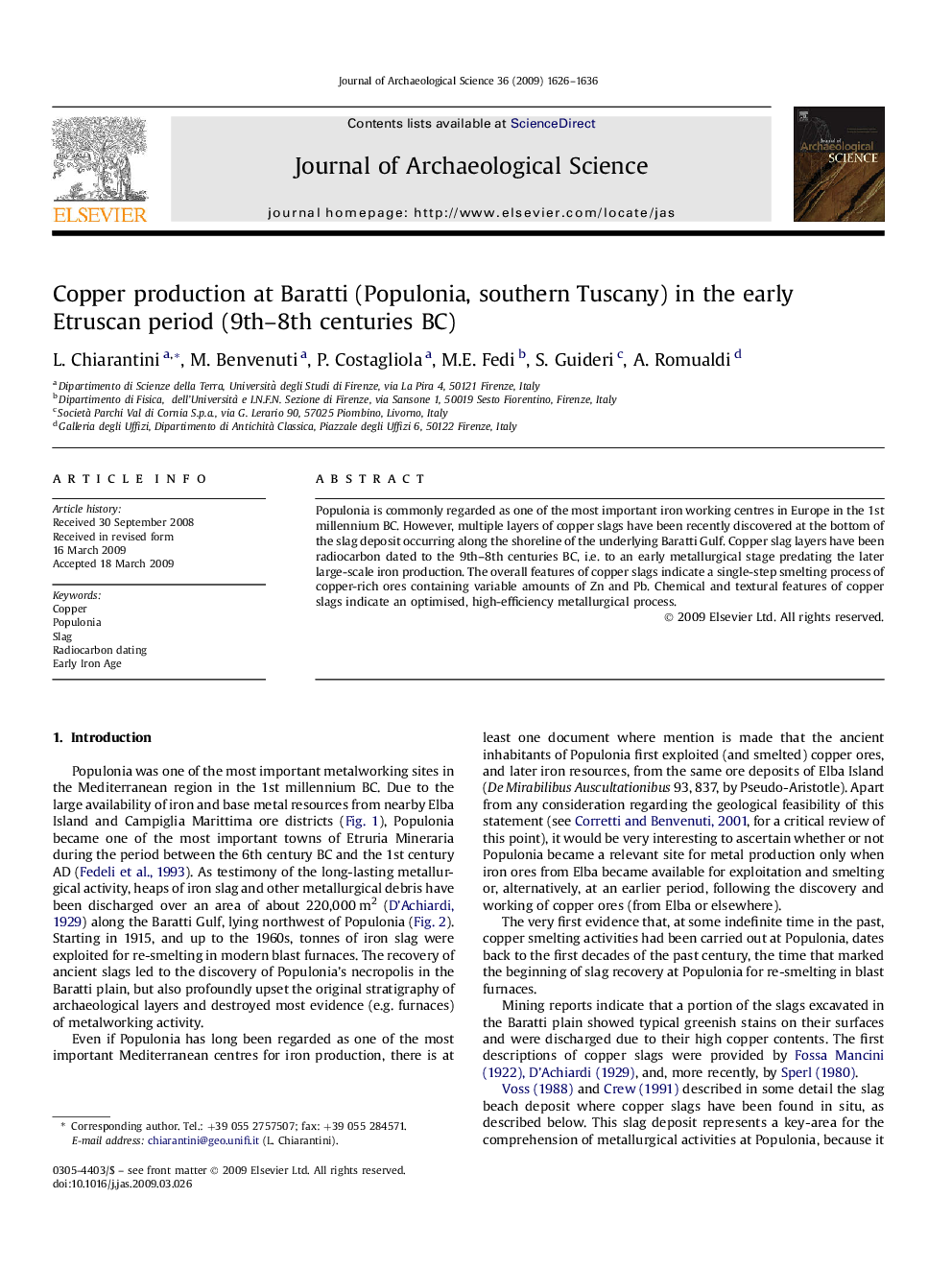| Article ID | Journal | Published Year | Pages | File Type |
|---|---|---|---|---|
| 1037041 | Journal of Archaeological Science | 2009 | 11 Pages |
Abstract
Populonia is commonly regarded as one of the most important iron working centres in Europe in the 1st millennium BC. However, multiple layers of copper slags have been recently discovered at the bottom of the slag deposit occurring along the shoreline of the underlying Baratti Gulf. Copper slag layers have been radiocarbon dated to the 9th–8th centuries BC, i.e. to an early metallurgical stage predating the later large-scale iron production. The overall features of copper slags indicate a single-step smelting process of copper-rich ores containing variable amounts of Zn and Pb. Chemical and textural features of copper slags indicate an optimised, high-efficiency metallurgical process.
Related Topics
Physical Sciences and Engineering
Materials Science
Materials Science (General)
Authors
L. Chiarantini, M. Benvenuti, P. Costagliola, M.E. Fedi, S. Guideri, A. Romualdi,
